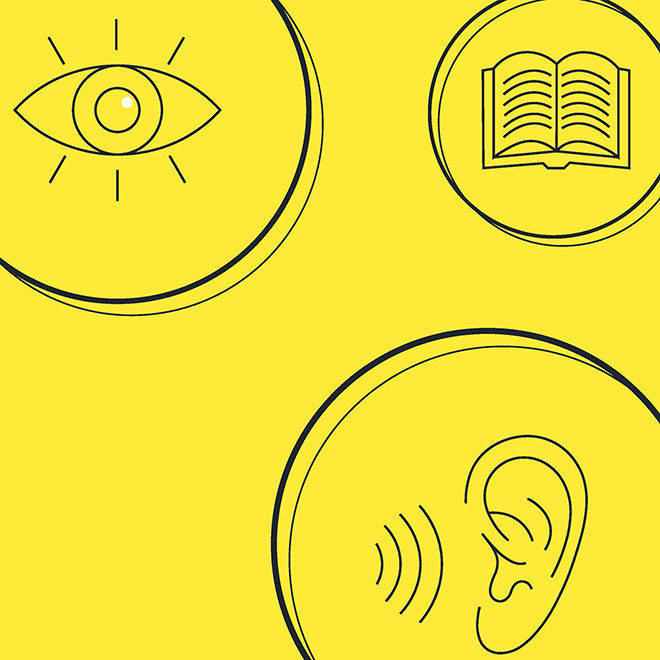
Learning Styles
How to succeed at work as an associate and manager depending on your learning style
Estimated Read Time: 4 Minutes
The concept of different learning styles traces its roots back to 334 BC when Aristotle suggested that “every child [possesses] specific talents and skills.” Today, there are four main recognized learning styles – visual, auditory, reading/writing, and kinesthetic – that explain the different ways people best take in new information. Understanding your learning style not only enhances personal productivity but also improves communication, collaboration, and knowledge transfer within a work environment.
In this article, we’ll dissect these four learning styles, highlighting their strengths and weaknesses, and provide strategies for success as an associate or manager, tailored to each learning style.
Visual Learners
Visual learners thrive on visual stimuli and learn best through reading and/or looking at diagrams and pictures. Visual learners excel at retaining visual memories, so presenting clear sequences or processes using graphs, diagrams, charts, and pictures can help them stay engaged. While visual learners are detailed notetakers and adept at creating visual aids to help others see what they see, they may struggle with verbal instructions and become easily distracted by background noise.

If you are a visual learner, seek out learning opportunities such as presentations or video demonstrations that include spoken instruction accompanied by visual aids like charts, graphs, photos, or written outlines that highlight the key takeaways. Take detailed notes, use color coding, and create visual aids to enhance information retention. If you are the direct manager of a visual learner, take the time to reinforce verbal discussions with strong visual cues to support understanding.
Auditory Learners
Unlike visual learners, auditory learners absorb information through sound, excelling in lectures, conversations, and audio materials. Auditory learners’ strengths lie in explaining or presenting information to others and recalling detailed information from conversations. On the flip side, auditory learners can be very distracted by excessive noise and find complex visual aids difficult to understand.

As an auditory learner in the workplace, it is helpful to talk through ideas and concepts with co-workers in-person, over the phone, or on a video call rather than an email exchange. Q&A sessions and knowledge shares are a good opportunity for you to learn about projects and share your work. When managing an auditory learner, maintain regular communication to clarify expectations and ensure they grasp key information.
Reading/Writing Learner
Reading/writing learners learn best through, you guessed it, reading and writing. They excel at independent work and prefer to work in a quiet environment. Strengths of this learning style include reading and digesting new information with little explanation or guidance and taking extremely detailed notes. Weaknesses include becoming frustrated when too many meetings or discussions are scheduled that cut into independent work time. Reading/writing learners also find auditory learning ineffective and have a difficult time focusing during presentations and lectures.

If this sounds like you, it is suggested that you read (of course!) and tell others that receiving information in writing is preferred. Take plenty of notes and re-write the notes if you need help getting the information to stick. Managing reading/writing learners may look like giving them space and independence while offering support when needed.
Kinesthetic Learner
Kinesthetic learners prefer to learn through physical movement and hands-on experiences. These learners like to move, build, draw, touch and feel rather than listen, read, or watch, and they benefit from opportunities to apply new skills to real-world scenarios. Kinesthetic learners are great at leading demonstrations and brainstorming sessions and problem-solving through trial and error. However, when required to sit for too long, kinesthetic learners may come across as fidgety or disengaged and may have a short attention span unless occupied with a task that requires physical activity.

Being a hands-on learner is especially challenging for those in office jobs. As a kinesthetic learner, try incorporating movement into the day – take a walk, squeeze a stress ball, or tap a pencil to improve focus. If you find yourself in a position where you are managing a kinesthetic learner, establish a calm work environment where the learner feels supported and given the freedom to tackle their problems.
By recognizing your own learning style and understanding those of your team members and clients, you can enhance conversations, brainstorming sessions, client presentations, and collaborative workshops. Whether you align closely with one learning style or a blend of multiple styles, adapting your work approach to accommodate your learning style is crucial. If you’re uncertain about your learning style, consider taking a quick online quiz to gain insights. If you aren’t sure what your learning style is, start with a quick online quiz (like this one) to help you start thinking about it.
At WD, we encourage our associates to engage in open conversations with their managers about their preferred learning styles and collaboratively develop strategies for success. Additionally, we offer a range of benefits, including ongoing learning and development courses and career development programs, to empower our associates to excel in their roles. Check out our careers page to find open positions if WD sounds like a fit for you!

 Michelle Rupp
Michelle Rupp


